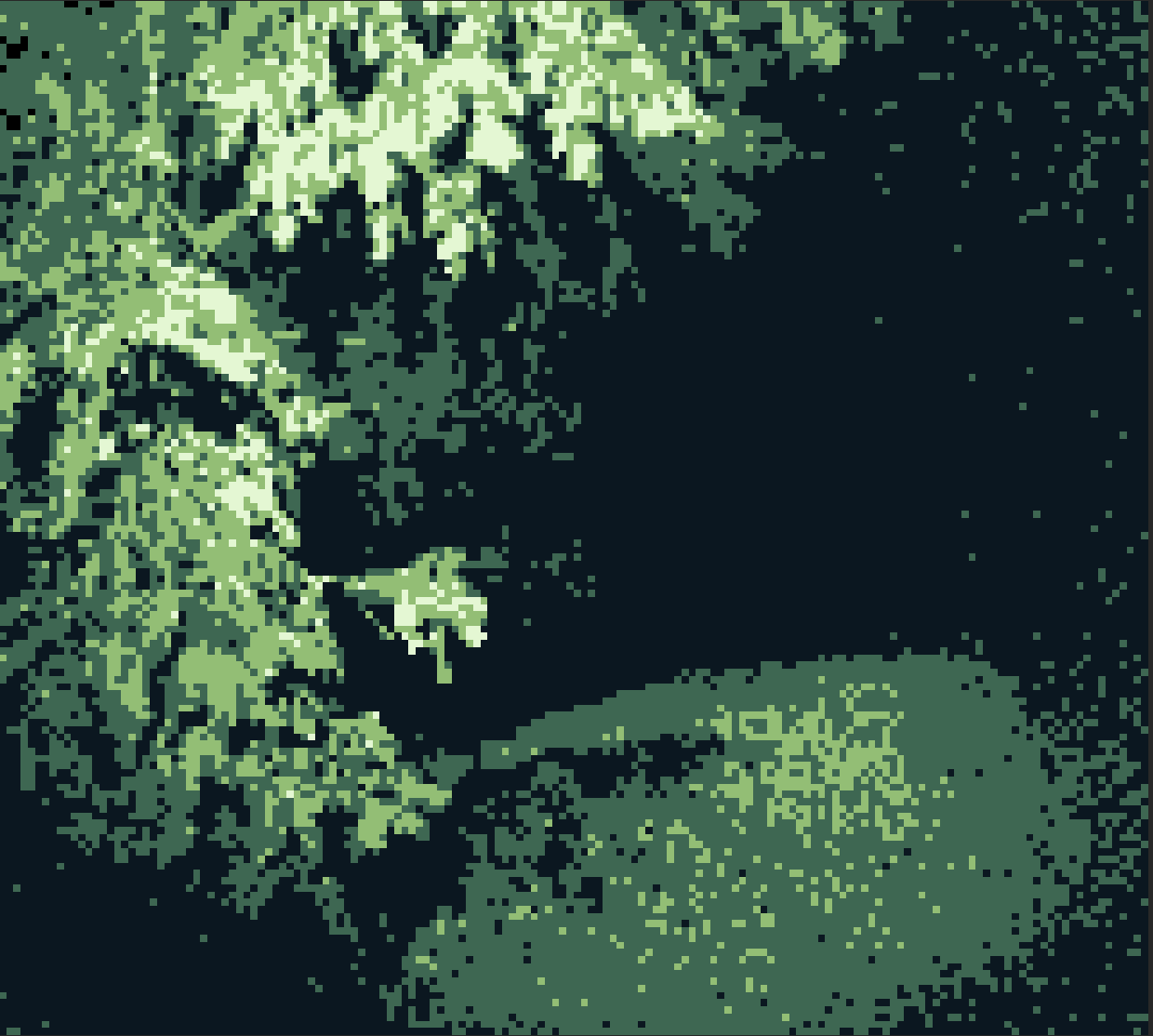Real Engine: experimental game design, psychogeography and magick by Yami Kurae
Yami Kurae is an artistic project by MGC member Matteo Polato and Jacopo Bortolussi. It started around 15 years ago as a noise & radical improvisation music duo, with a strong focus on the reuse of obsolete and malfunctioning media, and on how low fidelity can convey atmosphere, imagination and lore. It later evolved into composing music for film and theatre, such as the music score for the multimedia Noh theatre version of Ghost in the Shell (dir. Shutaro Oku, premiered in 2020 at Setagaya Theatre, Tokyo). Recently, our passion and research interest in gaming brought the project to new territories, including game design, while retaining the strong focus on media fidelity and experimental narratives.
The output of this new path is called Real Engine. As of today, Real Engine is composed of a sort of manifesto, published as part of the first publication of the DⱯRK – Dark Arts Research Kollective - and The Fair, a videogame that runs on GameBoy hardware and browser, available at: https://yamikurae.itch.io/the-fair
Real Engine is a practice-based artistic and research project aimed at developing methods of discovering – and at the same time producing – hidden and weird lore of everyday places. It involves the application of gameplay mechanics and game development as psychogeographical tools for real-world explorations, apocryphally combined with contemporary occultural creative practices of charging ordinary environments with paranormal meaning – such as in certain procedures of classical Chaos Magick, the viral mobile app Randonautica, or recent forms of Fortean investigation methodologies such as those developed in the documentary series Hellier (Planet Weird, 2019), cultural objects crucial for the understanding of contemporary occultural discourse.
As mentioned in the DⱯRK zine manifesto, Real Engine outlines an “ethics of virtuality, employing the act of gaming as an ‘attuning device’ to get exposed to the multiplicity of alternative networks of agencies embedded into the constitution of the everyday”. The basic assumption derives from the experience of videogame exploration and the interaction with virtual worlds: we do not consider virtuality as a component exclusive to videogames, but rather as a property of placeness which is also present in the real world, albeit often unmanifested. We therefore consider Real Engine almost as a form of ‘virtual magic’, a mode of subverting the taken-for-granted affordances of ordinary environments, allowing to engage with potential transitory agencies emerging through new affective relationships with place:
“the virtual and the material are immanent to one another, just as maps and territories are ontologically bound together. From this perspective, videogames – perhaps more powerfully than other forms of art because of their radically digital nature – represent tools that can be used as epistemological resonating filters to emphasise the virtual stratum of the ontological spectre of the real.”
Real Engine is also a way to honor peripheral places through an ethics of discovery that resists the reifying tendency of the so-called ‘ruin porn’, as it frames such places in a network of both human and non-human agencies to be approached with social, historical and ecological awareness. In this sense, we consider Real Engine as an ongoing process aimed at a ‘ludodivinatory exploration’ of the world, a form of magical thinking and practice that allows to trade “with the place as a way to reclaim the enchanted forces that inhabit it”.
A typical Real Engine ‘run’ generally develops as follows: we reach an area that does not need to bear particular imageries, lore or stories, and we start exploring it by adopting different gameplay mechanics, may these be souls-like, rogue-like, metrodivania; we may use videogames’ maps as psychogeographical orientation tools, speedrunning as a mode to cut through space, and so on. The practice is not regulated nor fixed, but emerges instead from an affective and imaginative interaction with the place itself. As a result, the place gets charged with stories, surprising details, unexpected events and, in particular, chance and synchronistic connections between otherwise unrelated things.
During the explorations we also produce multimedia content such as photos, videos, audio recordings, drawings, and notes. Together with the emerging lore, these become the foundation for the development of actual videogames that express and represent our experiences. So far we have developed games for Game Boy, as its portability makes it a suitable ‘attuning device’ to be used in situ for further explorations of the place, with the game itself now acting as a map to guide us and to trace new weird connections between the ‘virtual real’ and the ‘real virtual’. The games are developed using Chris Maltby’s GB Studio engine, and their contents strictly derive from the materials discovered and produced during the explorations. Our first game is called The Fair, born from the weird connections between a lake, an electric power plant and a bizarre effigy of a fish on a mountain wall. It is available on itch.io, playable on browser, emulator or GameBoy hardware. Currently, we are working on a new project that further expands the Real Engine mechanics of The Fair by soliciting a feedback loop between the development of a game based on real life exploration, and the exploration itself which is in turn oriented by the emerging map, structure and connection of the game in progress.


